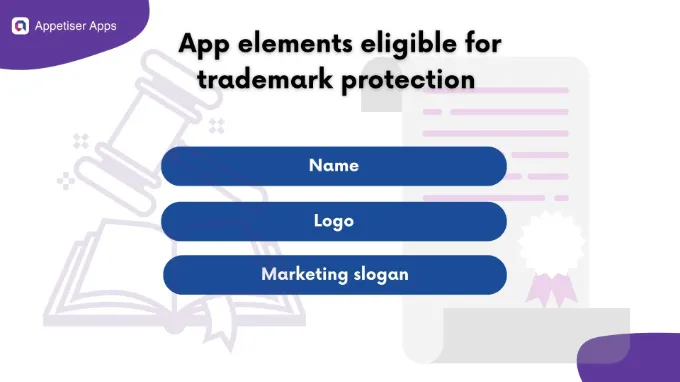I Have an Idea for an App, How Do I Protect It? Here’s a Step-by-Step Guide

This article is written by a guest author.
Imagine this: you’re scrolling through the App Store and stumble upon an app that’s eerily similar to your brilliant idea. Your heart sinks. Someone else beat you to it—or worse, took your idea and ran with it.
This is the nightmare every aspiring app publisher dreads. Whether you’re a first-time entrepreneur or a seasoned developer, the fear of losing your groundbreaking idea before it sees the light of day is real.
With over two million apps flooding the Apple App Store and Google Play Store in 2024, standing out is tough enough. But protecting your app’s intellectual property (IP)? That’s an entirely different battle.

Source: 42matters
So, how do you keep your app idea safe from copycats while turning it into a reality? This guide explores the key legal steps to protect your idea from competitors. Keep reading to learn how to safeguard your app idea and position yourself for long-term success in the app marketplace.
How to Protect Your App Idea Legally: 11 Essential Steps to Safeguard Your Vision and Stay Ahead of Competitors
1. Use Non-Disclosure Agreements (NDAs)
The first essential step in protecting your app idea is having anyone you discuss it with—business partners, developers, or collaborators—sign a Non-Disclosure Agreement (NDA). This legally binds them from sharing or using your idea without your explicit permission.
An NDA is a contract that safeguards confidential information by preventing the signer from disclosing it to others, either publicly or privately.
For example, if you’re discussing your app concept with a developer or potential partner, an NDA ensures they can’t share or pitch your idea to competitors.
What to include in an NDA
When drafting an NDA, ensure that the document includes precise details about:
- Which details are protected
- Who they’re protected from
- Consequences of breaking the contract
2. Document everything
Documentation will serve as proof if your original creation of the concept is ever questioned. Prepare for the worst by maintaining thorough records of your idea’s development, including sketches, business plans, emails, and conversations. Keep also other relevant documents o on hand, such as:
- Brainstorming notes
- Meeting minutes
- Design drafts and blueprints
- Written code
- Strategy documents
- Progress reports
To logically show the app’s progression, ensure all documents have the date clearly labeled and organized chronologically. This helps maintain a clear, traceable record of your app’s development process and makes it easier to demonstrate ownership and protect your intellectual property.
To streamline this task, you can also use Document Processing Automation solutions to efficiently sort, label, and store these records, ensuring easy access and organization.
You can also use a recording or transcription tool to capture meetings accurately. These documents can provide evidence of your work and its timeline if an infringement case pops up.
3. Copyright your code and content
Copyright protects the written code and unique content of your app. Since copyright only applies to tangible representations of an idea, it will only go into effect once you can physically show your work — in this example, when you’ve started the app’s code or interface design. You can copyright original aspects of your app, such as:
- Codes
- Designs
- Photos
- Videos
- Animations
- Audios
- Written descriptions
Additionally, register your copyright to ensure full protection. Submit copies of the unique assets you want to protect, along with proof of ownership, to the government’s intellectual property office. The registration process may take a few months.

4. File for a provisional patent
If your app idea involves a new process or algorithm, you can file a provisional patent for immediate legal protection for up to one year while you further develop your invention.
A provisional patent is a stopgap, a protective window to refine your app while keeping it from competitors.
Provisional patents are significant if you need quick protection but need more time to be ready for the long and expensive complete patent process, which can take 2-3 years or longer.
However, not all app ideas are patentable. The patent office will deny full protection if your app isn’t novel enough or if it can be easily copied. That’s why it’s important to understand when to file a provisional patent to secure your app’s unique features.
When to file a provisional patent
File a provisional patent after you’ve developed a functional part of your idea but before publicly disclosing it. Filing too early risks running out of time before fully developing the app, while filing too late allows competitors to catch up.
For example, let’s say you’ve created a basic version of a fitness app that tracks workouts and offers personalized training plans. If you file the provisional patent too early, you might not have enough features fully developed to protect your entire idea.
On the other hand, if you wait too long and reveal the app at a fitness expo, a competitor could launch a similar app with the same personalized approach before you even have the chance to file.
To protect your idea, consider the following steps:
- First, develop a working prototype with the core features.
- Once you have the working version, file a provisional patent to protect the functionality and core concept. Keep the app under wraps and avoid public disclosures until the provisional patent is filed.
- Once filed, you can continue developing and refining the app without the risk of competitors copying your core idea.
Long-term patent strategy
As you move forward, apply for full patents on the most novel functionalities of your app. This grants you exclusive rights and ensures robust protection against competitors copying your breakthrough features.
5. Trademark your app’s name and logo
Trademarking your app’s name, logo, or tagline stops others from using similar identifiers that could confuse users. While patents and copyrights protect the app’s features, trademarks protect your brand and reputation.
Trademarks help maintain the uniqueness of your brand by securing the specific combination of colors, fonts, and design elements you use, making your app stand out from competitors.
Aspects of apps that can be trademarked:
- Name
- Logo
- Marketing slogans
Pro-tip: Try to be unique when choosing trademarkable names or visuals for your app. Generic and overused words and phrases will make trademarking more difficult.

Trademark application timeline
Like patenting and copyrighting, the trademark process takes time. After submitting your application, expect it to take three to four months for the patent and trademark office to review it, with the entire process taking around 8 to 12 months to complete (in the US).
6. Create Ownership Agreements
If you’re working with partners or investors, create legal agreements that clearly define who owns what portion of the app and idea. This step is crucial in preventing misunderstandings or disputes down the line.
Clear ownership agreements also protect your interests, making it easier to secure funding, collaborate effectively, and prevent future legal conflicts over intellectual property.
What to include in Ownership Agreements
- Names of all owners and stakeholders
- How much and which parts of the app each stakeholder owns
- The responsibilities of each owner to the company and each other
- What happens when an owner decides to leave the business
When working with a development team, make sure the app developers sign contracts that give you full ownership of the source code, assets, and intellectual property before they begin any work. Without this, they could claim ownership of the app when it’s time to copyright.
Using reliable contract software can help you create clear, legally binding agreements that protect your ownership of the app’s source code, assets, and intellectual property.
7. Limit access to your idea
While the prospect of a new app is exciting, you’ll want to keep things under wraps until you can secure legal protections for your code, visuals, branding, and processes. You never know who will see your openness as a vulnerability to exploit.
As a general rule of thumb, only share your idea with trusted and necessary people, like reputable app developers or investors. Keep critical details private until you are ready to launch or fully protect your concept. Otherwise, you risk someone else capitalizing on your original idea.
8. Build a strong brand
Creating a recognizable brand around your app not only helps you stand out in a crowded market but also adds an extra layer of protection to your idea. Elements such as the following create an identity that’s uniquely yours, making it harder for competitors to steal your market share:
- App name
- Logo
- Colors and fonts
- Tone and voice
- Mission statement
- Brand story
- Website
- Blog, email, text, and social media content
To build up your brand, ensure these elements are clear, unique, and appeal to your target market. One way to make your brand resonate with the right people is to create user personas.
Understanding your audience’s preferences will guide your branding decisions and make your app harder for others to copy or compete with. Remember, a loyal and engaged user base developed through clear branding is less likely to switch to a competitor.
9. Ensure app store protection
Review the specific app store guidelines to protect your app idea once it’s launched. These platforms have measures in place to handle IP infringement claims, which usually involve submitting a form for disputes involving app elements, such as:
- Names
- Logos
- Written descriptions
- Visuals
- Ads
Depending on the type of dispute, the mobile app store may connect you with the offending app owner to resolve the issue directly. If the problem can’t be handled privately, the marketplace’s legal team may step in to help or recommend you take further action.
See related articles:
- Submitting an App to the App Store: A Step-by-Step Guide to Navigating the Strictest App Marketplace
- How to Submit Your App to Google Play Store and Make It Known
10. Protect your idea internationally
If you plan to launch your app in multiple countries, ensure you understand international intellectual property laws. You may need to file for protections like patents or trademarks in different jurisdictions.
The Patent Cooperation Treaty (PTC) allows you to file a universal application for patent offices in multiple countries, including:
- Australia
- Brazil
- Canada
- China
- Egypt
- India
- Japan
- The Philippines
- Russia
- Spain
- Sweden
- The US
In this process, an International Searching Authority (ISA) researches your app and then writes an initial opinion on whether or not it should be patented. This allows for a much more practical process than applying and filing for patents in many regions separately.
11. Monitor potential infringements
Keep an eye on the market for any unauthorized use of your app idea, name, or content. Tools like Google Alerts and IP watch services can help you catch any infringements quickly.
Other valuable tools you can consider are:
- DMCA.com
- Red Points Trademark Watch Service
- Recorded Future Brand Intelligence
- RiskProfiler
- Allure Security Online Brand Protection
You can also try manually searching for your app regularly to spot possible copies as they pop up. Additionally, digitally watermarking your visual assets can help identify attempts to steal or misrepresent your work.
Frequently Asked Questions
1. How can I discuss my idea with developers securely?
Only bring in developers you trust and have thoroughly vetted. Before diving into the details of your idea, ask potential partners to sign non-disclosure agreements (NDAs) that prevent them from legally using or sharing information about your app.
Can I patent an app idea?
Yes, if your app uses unique algorithms or processes. However, patenting an app often costs more than $10,000, takes two to three years, and is difficult to achieve. Consider first filing for a provisional patent that allows you a year of protection to continue working on your idea.
What parts of my app can I copyright?
You can copyright all expressive or artistic elements of your app, including the original written code, designs, visuals, written descriptions, and other content.
How can I prove that I was the first to come up with the idea?
Keep thorough documentation throughout the app development process, including summarized notes of every brainstorming session and meeting, all versions of sketches and designs, and every draft of written code. Also, have any developers and partners sign contracts giving you ownership of all assets.
What happens if someone steals my app idea?
You can sue for infringement if you have legal protections like a copyright or patent. This process usually starts with a cease and desist letter for copyright.
Otherwise, you can prove the idea was stolen through dated documents of your work and meeting transcriptions.
As a proactive measure, consider having every person you discuss the app with sign an NDA that prevents them from legally using or giving away information about your idea.
Secure your concept, shape your success
The app development landscape moves quickly, and the last thing you want is for your idea to be copied before it has a chance to shine. Taking the right protective measures, like securing patents and trademarks, sets the foundation for your long-term success.
At Appetiser, we take this seriously — ensuring that you not only secure your brilliant app idea but also retain full ownership and control. You retain full ownership and proprietary rights to your app —whether it’s web, iOS, or Android— after development. This means your idea remains yours, giving you the flexibility and control to scale and innovate as you see fit.
Ready to take the next step? Let’s work together and make sure your idea is protected and poised for success.
Josh Sainsbury
Josh Sainsbury is a business content editor with extensive experience creating technical content that is accurate, accessible, and user-friendly for diverse audiences. With a degree in Magazine Journalism from Southampton Solent University, he has worked across the education, travel, and legal sectors.
Josh has developed expertise in key legal areas, including the documents needed to start a business and the hiring and management requirements. His work empowers individuals and businesses to navigate legal processes confidently and clearly.
Expertise: Starting a business, Business operations, Employment and HR
Education: Southampton Solent University


Jane Eslabra has 14+ years of experience producing content across traditional and digital platforms. She channels her strong passion for fostering tech startup growth through knowledge sharing.


